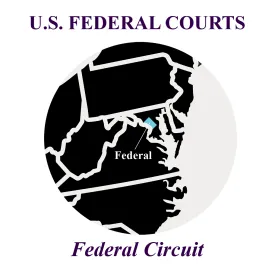The US Court of Appeals for the Federal Circuit found that an inter partes review (IPR) petitioner that had not been accused of infringement had standing to appeal a final decision in an IPR because the petitioner alleged facts establishing that there was a substantial risk of infringement of the challenged claims. General Elec. Co. v. Raytheon Techs. Corp., Case No. 19-1319 (Fed. Cir. Dec. 23, 2020) (Hughes, J.)
Raytheon owns a patent directed to a configuration for mounting a turbofan gas turbine engine to an aircraft pylon. Turbofan engines rely on four main component sections—the fan, compressor, combustor and turbine—to generate thrust from the continuous ignition of a mixture of fuel and pressurized air. The compressor and turbine sections are further divided into high-pressure and low-pressure segments. Each of these segments consists of stages, which include a matched set of rotating blades and stationary airfoils. The patent claims recite a “first” spool, which the parties equate with a low-pressure spool, turbine and compressor, and a “second” spool, consisting of the high-pressure spool, turbine and compressor. The claimed “second” spool includes “at least two stages.”
General Electric (GE) competes with Raytheon in the commercial aviation engine market and petitioned for IPR, challenging several claims based on two prior art references, Wendus and Moxon. Wendus discloses all elements recited in the challenged claims, except that it teaches a single-stage high-pressure turbine instead of the claimed “at least two-stage” high-pressure turbine. Moxon states that to improve fuel efficiency, “a move to one instead of two HP turbine stages is thought unlikely.” The Patent Trial and Appeal Board found that all elements recited in the challenged claims were found in the prior art but found that the claims were not proven to be non-obvious, in part because Wendus expressly considered at least some of the one-stage versus two-stage tradeoffs and specifically chose the one-stage option. This express consideration meant that Wendus taught away from combination with Moxon, the Board reasoned. GE appealed.
Before reaching the merits of the appeal, Raytheon moved to dismiss the appeal for lack of standing, arguing that it had never sued or threatened to sue GE for infringing the patent. Accordingly, the standing dispute centered on whether GE had sufficiently alleged an injury in fact. The Federal Circuit explained that “when an appellant relies on potential infringement liability . . . it must establish that it has concrete plans for future activity that creates a substantial risk of future infringement or would likely cause the patentee to assert a claim of infringement.” In the context of an appeal of an IPR proceeding, “it is generally sufficient for the appellant to show that it has engaged in, is engaging in, or will likely engage in activity that would give rise to a possible infringement suit.” GE presented evidence that it spent $10 to $12 million in 2019 developing a geared turbofan architecture and design and that it offered its geared turbofan design to Airbus in response to a request for information. GE also presented a sworn statement from its chief IP counsel indicating that “GE fully expects that [Raytheon] would accuse this engine of infringing the [] patent.” While the Court acknowledged that GE did not admit to infringement, it surmised that “the most reasonable inference [] is that GE believes its [new] design raises a substantial risk of infringement.” These factual allegations were sufficient to establish standing.
On the merits of the appeal, the Federal Circuit found that the Board lacked substantial evidence to support its finding of non-obviousness. Specifically, the Court found that while the Wendus reference may be read to suggest a general preference for a one-stage high-pressure turbine, this general preference alone was not enough to conclude that “Wendus discourages the use of a two-stage high-pressure turbine,” as per the Board’s rationale. The Board reasoned that one of ordinary skill in the art would have known that modifying the Wendus engine to include a two-stage turbine would have increased the weight and cost of the engine. While a skilled artisan may understand this downside to a two-stage engine, Wendus itself does not criticize the use of a two-stage turbine for weight or cost reasons. “Wendus does not make a single negative statement about the use of a two-stage high-pressure turbine.” Accordingly, the Court found that substantial evidence did not support the Board’s conclusion that Wendus teaches away from modifying the engine to include a two-stage option.
Practice Note: To establish standing, GE provided a declaration that it fully expected Raytheon to accuse its prototype engine of infringement. While the Federal Circuit stated that “IPR petitioners need not concede infringement to establish standing to appeal,” it noted that “GE does itself no favors by making its allegations so coyly.” Accordingly, it is important for IPR appellants that have not been accused of infringement to carefully balance the need to submit evidence sufficient to meet the standing requirements with an aversion towards admitting to infringement.




 />i
/>i

